Newsletter for August, 2015
“Everything Must Change...”
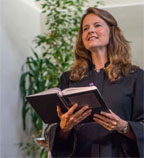 August is a month of transitions for many of us. The summer draws to a close, the church year begins in earnest, children mostly return to school, and my time with you will be coming to an end. I am grateful that our theme for this month is Compassion so that we can approach all of these transitions with gentleness and compassion.
August is a month of transitions for many of us. The summer draws to a close, the church year begins in earnest, children mostly return to school, and my time with you will be coming to an end. I am grateful that our theme for this month is Compassion so that we can approach all of these transitions with gentleness and compassion.
This year with UU Santa Monica, first as your Intern and then as your Summer Minister, has been extraordinary in so many ways. Getting to know many of you, and spending time in this vibrant, dedicated, and committed community has been enlightening. I have learned so much being with you and have appreciated the care and compassion you’ve shown to me as you shepherded me through the Intern process. Special thanks go to my hard working and supportive Intern Committee — Barbara Kernochan, Eric Huang, Rick Rhoads, Cathie Gentile, Pat Gomez, and Karen Hsu Patterson. It has also been fascinating to participate in your Faith in Action program and see the many ways in which you come together as a community to bring more compassion and kindness to this world. I relished helping with both children’s and adult Religious Exploration and seeing the many dedicated volunteers among you who offer your time, expertise, and guidance to our youth. Thanks, too, to the gifted staff, whom I have watched work tirelessly for the good of this community. I have rarely seen a congregation with so many skills, ideas, and programs all initiated because of your passion and love for this community and our faith.
Ministerial covenants suggest that a former Intern keep their distance for a while after leaving in order best to support the present ministry of the congregation. I will miss being with you all tremendously but feel comforted knowing you all will continue to work to make the world a kinder, more compassionate, and just place! I will certainly hold you all in my heart and cherish the time we have spent together. UU Santa Monica will always be special to me as the place where I got to take my floaties off and really dive into this wonderful calling of ministry.
I look forward to seeing some of you in Santa Barbara at my Ordination on August 30. There we can celebrate together the formative time I have spent with you and the gift you have given the wider UU world by preparing a minister for service to Unitarian Universalism. I do not yet know what’s next, but hope to continue serving in ministry somewhere in Southern California.
Words hardly seem adequate to express my gratitude to you all. I have been changed by knowing you and am so grateful to have been a part of this community for the past 13 months. Until we meet again... . In deepest gratitude and love,
-- Nica Eaton-Guinn
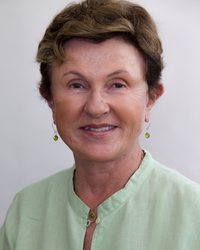 Get a Taste of the UUA Gen- eral Assembly on August 9
Get a Taste of the UUA Gen- eral Assembly on August 9
This year’s UUA General Assembly (GA) in Portland, OR, from June 24 to 28 was a great experience for the 23 of us, including seven youth, who attended from UU Santa Monica. It was even a momentous experience because it coincided with the Supreme Court decision to legalize same-sex marriage. Same-sex couples filled the stage in the auditorium to celebrate.
Seven of us were delegates, our allotment based on the size of our membership. As delegates we attended the business sessions and exercised our right to vote on the Statement of Conscience, which is Reproductive Justice, and three Actions of Immediate Witness: Support the Black Lives Matter Movement; Support a Strong, Compassionate Global Climate Agreement in 2015, Act for a Livable Climate; and End Immigrant Child and Family Detention Now.
The Opening Ceremony on Wednesday night with its Banner Parade was a moving experience. Our youth carried our banner.
GA with almost 5,000 attendees is a grand undertaking by the UUA. As with any undertaking there are lessons to be learned, and our very own Kikanza Nuri-Robins was there to help the trustees’ transforming governance committee look at ways to be more efficient and more inclusive in the decision-making processes.
Our group managed to get together a few times, one to have beer and pizza on Thursday, and again on Friday with the youth to plan our GA service on August 9. I asked our attendees to share the workshops they attended. Here’s a sampling: “Creating our Legacy, Building our Future: Planned Giving Made Easy”; “Faith in the Margins: First Century Guide for the 21st”; “From Transaction to Transformation: Building a New, More Generous Way”; “Year Round Pledging: the Next Big Thing”; “Empathy and Connection through Compassionate Communication”; “Finding Our Way Back to Right Relationships”; “Creating New Ways of Reflection and Learning about Israel/Palestine”; “CommUUnity Activism in a #BlackLivesMatter World”; “Detroit — the new Selma: Inequality, Our Water and Our Human Rights“; “Partnering to End the New Jim Crow”; “Commit2Respond: Advance the Rights of Climate-affected Communities”; “A Way Out of No Way: Living Legacy Project, UU History & Heritage Society”; “Sanctuary Is More Than a Building: Metro Denver Sanctuary Coalition”; “The Fires of Ferguson Still Burn Within Our Hearts”; “Developing Spiritual Leadership and Culture for Collective Liberation”; “Using Investment for Social Change”; “Restorative Practices: Tools for Healing.”
My big takeaway: We are together in the good work that we do, and we are together in the struggles we face. We’ll recreate a bit of our experience at our “Reflections on GA” church service on August 9. Tempted? GA will be in Columbus, OH, in 2016 and New Orleans, LA, in 2017.
— Patricia Wright
 Past President Cynthia Cottam, President Patricia Wright, Summer Minister Nica Eaton-Guinn, and the Rev. Dr. Ken Brown at a workshop on governance held at the church on Saturday, July 11. Photo by Charles Haskell.
Past President Cynthia Cottam, President Patricia Wright, Summer Minister Nica Eaton-Guinn, and the Rev. Dr. Ken Brown at a workshop on governance held at the church on Saturday, July 11. Photo by Charles Haskell.
The Rev. Dr. Ken Brown’s Governance Workshop
By Steve White
The Rev. Dr. Ken Brown, at our Board’s invitation, presented a three-hour “Governance Workshop” on Saturday, July 11. All nine board members were present, as was our Summer Minister. Also present were 15 other church members (a mix of new members and long-time members, most of whom have served or are serving in leadership roles in the church).
Ken is on the UUA Staff, for the last 16 years serving, alongside of Tera Little, our sabbatical minister this coming fall, as the Congregational Life Specialist for the Pacific Southwest District, the group of 50 UU churches in Southern California and Arizona. He noted that the PSWD board and staff have moved toward policy-style governance over the last few years. He serves as one of the consultants to district churches and presents numerous workshops on common church-related topics. He became a UU minister 41 years ago, and served several congregations around the U.S. for twenty-some years before joining the UUA staff.
He noticed the “Coming of Age Covenant” on the wall of the classroom: “To Be Present, To Have Fun, Not to Be Too Hard, No Laughing at One Another, Respect Other People’s Opinion, Listen to Each Other, No Phones, Step Up/Step Back, Judgment Free” as a good example of a covenant, as opposed to a creed. He reminded us that we are a covenantal faith and that developing covenants is an important aspect of our UU tradition. Throughout his talk, Ken returned regularly to the importance of talking among ourselves and always dealing with each other and issues in a relational way.
He described boards as having five basic functions: 1) develop & hold up mission/vision statements, 2) define policy, 3) develop a strategic plan, 4) provide for financial responsibilities and 5) perform ongoing assessments. He said that the role of the board was to make sure that essential things happened, such as fundraising. He noted that leadership in UU churches is hard work, especially as we place a high value on “process.”
The most-often neglected board function is “assessment” — the ongoing monitoring of all church functions, activities, and processes as compared to the policies that describe them, in relation to advancing the mission and ministries of the church. Well-thought-out assessment tools are required. He did not think that assessments should be done anonymously, but rather that people should convey their assessments by speaking out and discussing them with each other. An opinion is not worth much if it does not have a person attached to it. He recommended that assessments be done by “focus groups,” specifically including newcomers and limiting the role of elders, while always asking “Who’s Missing?” Ken distinguished “assessment” from “evaluation,” relative to “honest oversight.”
Ken said that the book “Governance and Ministry — Rethinking Board Leadership” (2009) by Dan Hotchkiss, a UU Minister and Alban Institute senior consultant, was the source of many of the ideas about governance being considered by or already adapted for the UUA and many UU churches. [Note: Our President, Patricia Wright, made copies of this book available to the congregation last fall. Since then the Board has devoted substantial time over several board meeting studying various chapters in order to become well informed about whether to further explore changes to our congregation’s governance.] Several who have read the book noted that it offers a wide range of possibilities, some of which we already use in our congregation’s organization, stating that UU Santa Monica’s style of organization is already a type of policy-style governance.
He defined “governance,” as embodied in “policies,” as defining the relationships and authority among the various parts of the church organization, whereas the bylaws describe the components of the organization by defining basic rules, such as how one becomes a member, procedures for calling and dismissing ministers, requirements for electing board members, and procedures for approving a budget. Bylaws should be minimalist. He stated that “policies” are defined and modified by the board, not the congregation, with bylaws limited to a few basic matters. The group found this to be a difficult distinction. Governance by policies is intended to empower the people of the congregation to conduct the ministry of the congregation and fulfill our mission. Policy is about the relationships and roles within the church. For example, how does the minister relate to the staff? Ken admitted that development of policies is very difficult. The group struggled to understand his statements. For instance, policies set the “big picture”; you can carry out the ministry of the church “within these boundaries,”then the committees are freer to plan their activities. They do not have to go to the board for approval of everything as long as they function within the boundaries of the policies. Policy governance gives more liberty to the committees, their activies are not so restricted by the board. The board’s role is enforcement within the limits or boundaries set by the policies.
Mid-size churches such as ours, with 338 members, often move towards “policy-style” governance. [Note: “Policy Governance” is a registered trademark for specific secular rules created by John Carver. John Carver is an adjunct professor in the Institute for Nonprofit Organizations at University of Georgia School of Social Work.] Ken Brown warned of the perils of taking Carver’s ideas too literally, specifically his rule that the minister should be the Chief Executive Officer (CEO) of the church. According to Ken, “governance by policy” does not mean that the minister becomes the CEO of our congregation. Patricia, our President, stated that this is not the intent of our Board. A UU minister is more of a facilitator, not a CEO. Ken noted that in UU churches the minister “has no authority to tell people what to do” but rather facilitates processes. The facilitative role of the minister is to help empower people to get going or to help them relate, for instance, by promoting awareness of the UU Seven Principles and enabling us to implement them in our ways of relating to one another. Ken was adamant that “in no way is the role of the minister to be over anyone.” A number of people expressed that they did not want the minister to function in our congregation as a CEO.
A member asked “Why?” — what problems or issues prompted the Board’s interest in studying and possibly changing our governance? A specific UU Santa Monica response was pre-empted by Ken proceeding to address how to determine whether a church needs changes to its governance He cited some circumstances: 1) “most congregations don’t know how they are governed”; 2) reduce ambiguity and frustration by simplification; and, 3) provide a means to deal with conflicts, for instance, if rudeness and personal criticism have become common. A sense that our church is having conflict was brought up a number of times in a number of contexts by the group. In one instance, someone asked if our church should be dealing with changing our governance while we have so much conflict. About this, Ken said that “you must deal with conflict while dealing with governance.” He also suggested that some changes were needed to reflect the expanding roles of most UU ministers in church management and operations. Tweaking of policies and bylaws and adapting some policy governance ideas is what most UU congregations have done. Patricia said that this is what our Board seeks to explore. Ken stated that, in general, 80% of the members of most congregations have no interest in governance and simply want to have good Sunday services and a good RE Program. At most, 20% are involved or interested, with perhaps another 10% having some mild curiosity. [Note: about 120 of our 330 members at the time (36%) participated in our latest Annual Business Meeting in person, by absentee, or by proxy. In the fall of 2009, the Settled Minister Search Committee Congregational Survey had 209 responses, about 50% of our congregation at the time.]
One attendee stated that she doesn’t feel heard, that despite being a long-time member, she feels ignored and excluded by “insiders.” Another long-time member said she felt not heard, condescended to, and not given explanations by leaders. Ken said it is the board’s responsibility to listen to the congregation and transparency must be at all levels. Ken said that there needs to be a place for people to feel heard. He recommended establishing a “Covenant of Right Relations,” defining a process for setting and assessing boundaries, providing a respectful place where it is OK to be candid, as well as providing other processes for maintaining constructive behaviors. He noted that “transparency”can take many forms, as it is the conversation between the board and the congregation. Transparency is providing information to everybody by multiple means. [Note: there is a gap between what our leaders have regarded as “transparent” and the expectations of some church members, a difference that should be explored.]
Ken suggested that one means of opening the board processes and discussions to the congregation is for the board to hold open meetings after services on a quarterly basis, rather than rely entirely on monthly newsletter columns. This idea met with much approval, although some noted the loss of efficiency. The board should publicize its agenda and goals and invite participation. He then stated that board meetings should never last more than two hours; longer meetings indicate a lack of focus, lack of delegation, and unclear governance procedures. This idea was met with enthusiasm. Some past presidents stated that their board meetings had never lasted more than two hours.
One element of “policy-style” governance might be the transformation from our current administrative and other committees into about six “Ministry Teams.” Within “boundaries” set by policies and budgets, the groups are empowered to “do ministry” without needing to obtain board approval. This is intended to enable new ideas and initiatives to be started more easily, without frequently having to go to the board for approval. [Note: This is somewhat different than the way we in Santa Monica currently do things, as some committees often do come to the Board with proposals for approval, while others do operate more independently.] The goal of governance by policy would allow more freedom for all committees to do independent work on the “ministry” of the congregation. [Note: A distinction must be made between board committees (finance, personnel, stewardship/pledge) and activity/affinity groups, which although referred to as “committees”, are functionally “task forces” or “programs.”]
Ken contended that strong policies provide continuity, so that church functions don’t depend entirely on the style and interests of whoever is Board President. A past president contended that the purpose of the our Bylaws was precisely to provide that continuity, much like our Constitution protects the citizens from departures from our principles attempted by the President or the Congress. Policies can limit the common inclination of volunteer leaders to micro-manage.
Ken presented a diagram by William Bridges of the process of change over time. [Note: William Bridges was an organizational consultant who emphasized the importance of understanding transitions as a key for organizations to succeed in making changes.] Change is always with us, but we get stuck in transitions. Successful change requires gut/ emotional levels of conversation after defining what, where, and how, moving from personalities to issues. Sometimes a few loud voices block change. [Note: on the other hand, members with concerns often remain quietly on the sidelines, not wanting to raise questions that might provoke controversy and challenge our ability to “dwell together in peace.”] Some attendees noted that very little governance communication happens outside of Board meetings.
Another important, but often neglected, board function is leadership development. He advocated replacing the Nominating Committee, active only from January to May, with a year-round Leadership Development team. He stated that the personal interests, experience, and skills required at each level (member, committee member, chair, board member) are not the same, with someone eager to run a program not necessarily having the broad experience and perspective appropriate to a board member.
However, the spouse of a long-time member of the Nominating Committee said that this model is not even close to how the committee actually functions. He said that often well-qualified choices for leadership roles decline the nomination, leaving the Nominating Committee more and more anxious for some willing, dutiful members to step forward, often after protesting that they are unqualified. As a consequence, new Board members may struggle until they have learned the ropes. They need to learn what is expected of Board members, how the church is organized, what the policies and procedures are that guide the church’s activities, and to learn the recent history of the Board so they understand the context of decision making at the Board level. [Note: However, this broader recruitment net often leads to the inclusion of a wider variety of members, who grow into effective leaders. An analysis of why many decline to take on leadership roles, as well as clarification of the roles, might lower the perceived barriers to serving.]
All in attendance regarded the workshop as stimulating, thought provoking, and a good start to further discussions about healthy processes for defining, evaluating, and gaining consensus about possible appropriate changes.
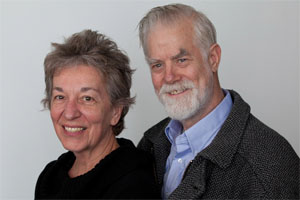 Steve White is a Past President of our congregation. He served as the scribe for the Committee on Money during the 2014- 2015 church year. He currently serves as Chair of the Membership Committee. His wife, Sue Stoyanoff, is co-chair of the Committee on Ministry. Contributors to this article were Patricia Wright, Nica Eaton-Guinn, Beth Brownlie, Rick Teplitz, and Diane Fletcher-Hoppe. Editorial comments were received from Ken Brown, Kit Shaw, Joe Engleman, Kim Miller, Sue Stoyanoff, and Charles Haskell.
Steve White is a Past President of our congregation. He served as the scribe for the Committee on Money during the 2014- 2015 church year. He currently serves as Chair of the Membership Committee. His wife, Sue Stoyanoff, is co-chair of the Committee on Ministry. Contributors to this article were Patricia Wright, Nica Eaton-Guinn, Beth Brownlie, Rick Teplitz, and Diane Fletcher-Hoppe. Editorial comments were received from Ken Brown, Kit Shaw, Joe Engleman, Kim Miller, Sue Stoyanoff, and Charles Haskell.
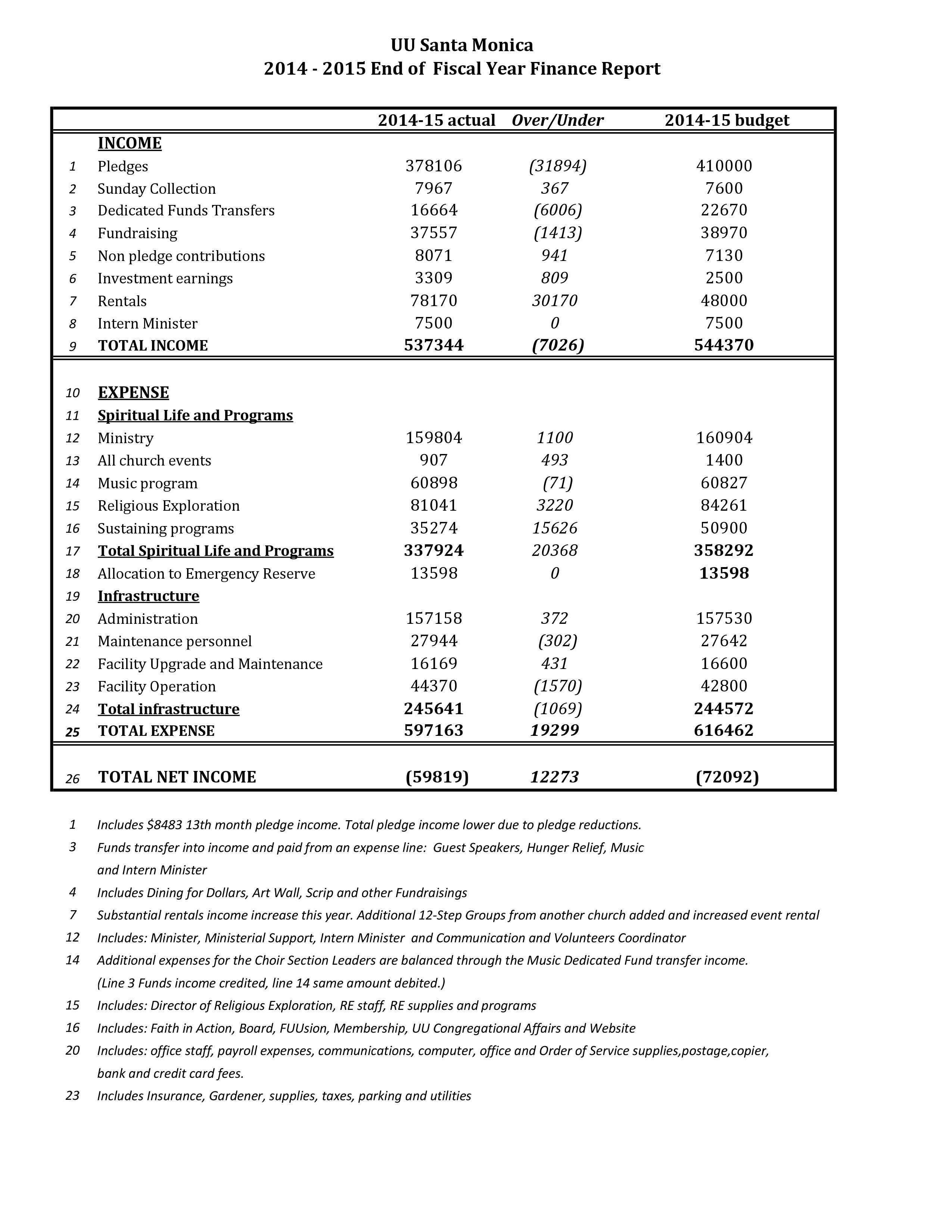
The Annual Interweave / Women’s Alliance Picnic
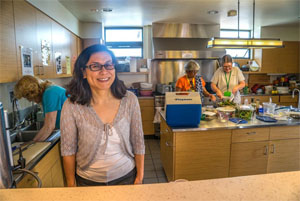
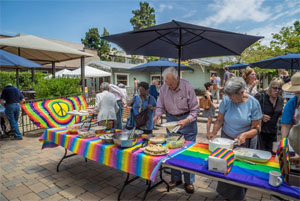
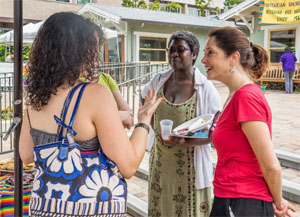
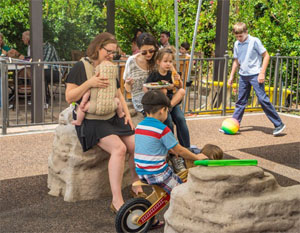
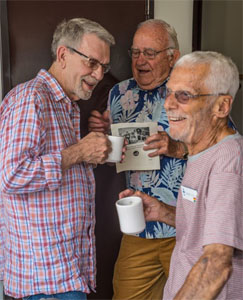
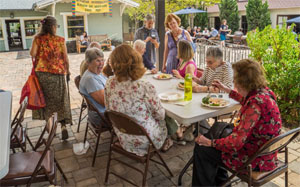

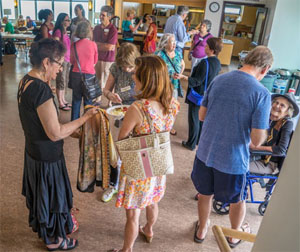
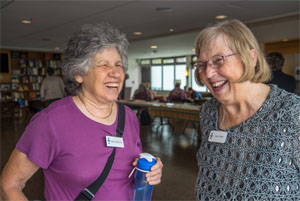
Quotes About COMPASSION
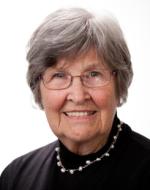 Bettye Barclay has provided this list of quotes about our ministerial theme for August. Daily quotes also appear in the weekly electronic announcements.
Bettye Barclay has provided this list of quotes about our ministerial theme for August. Daily quotes also appear in the weekly electronic announcements.
Week 1. Some people think only intellect counts: knowing how to solve problems, knowing how to get by, knowing how to identify an advantage and seize it. But the functions of intellect are insufficient without courage, love, friendship, compassion, and empathy. — Dean Koontz
Week 2. Love and compassion are necessities, not luxuries. Without them humanity cannot survive. — Dalai Lama
Week 3. The dew of compassion is a tear. — Lord Byron
Week 4. The individual is capable of both great compassion and great indifference. He has it within his means to nourish the former and outgrow the latter. — Norman Cousins
Week 5. Give children at least as many chances to be compassionate as they have to be competitive. — Erica Layman

Conversations About Death: How to Die
In the series for August, “How To Die,” the Rev. Carrie Lauer and Cassandra Christenson will draw upon their experiences of being with the dying, the wisdom of ancient traditions, and the knowledge of those who have had profound experiences when death seemed to be upon them. Please join us on these two special evenings this August. Questions? Contact Cassandra.
How to Die: Tuesday, August 11, 7 to 8:30 p.m. in Forbes 1 upstairs. Death will happen and generally it is not known when or where. We may be alone by choice or by accident. It is good to know how to help one's own self through this unknown time that we may be without fear. Rev. Lauer and Cassandra Christenson will co-lead the evening.
Conversations About Death: Tuesday, August 25, 7 to 8:30 p.m. in Forbes Hall. Open discussion. We will share our worries and experiences. We will gain from one another in an intimate, safe setting as we learn about this major event of our lives. Led by Cassandra Christenson, retired R.N., whose life's work has been with end-of-life concerns.
Persons with Disabilities Discussion and Support Group
The Persons with Disabilities Discussion and Support Group held their first meeting on July 12. After sharing what they wanted to get out of the group, their greatest frustrations and greatest successes, it was clear that all wanted to help one another and all were invested in making the group work. Mark Christiansen, a UU Santa Monica member since November 2013, facilitated the group, which went “swimmingly.” He attributed the formation of the group to the love, encouragement, and support he has received from the congregation. Mark has been a person with speech and mobility disabilities for 40 years, since a motorcycle accident when he was 17. He has subsequently been married twice, raised two kids, and earned a Master’s degree. For the last 20 years he has been a California Licensed Marriage and Family Therapist, specializing in rehabilitation. He is on the counseling staff at Santa Monica College and loves to play golf, using one arm to drive and chip. The group welcomes everyone with any type of disability — temporary or long-term, acute or chronic, mild or severe. He emphasized that this includes persons of all ages, including older persons with limited mobility. The Persons with Disabilities Group will meet two times each month after services in the Cottage North-East Room. Give it a try! Be generous with your appreciation and support of this exceptional leader, who often says, “I did it for the parking!”
— Steve White
Warren Mathews Conference Room Celebration
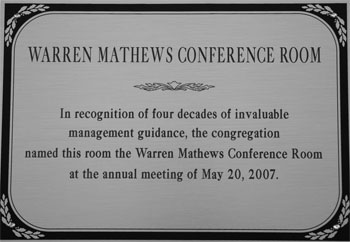 Charles and Christine Haskell, Ron Crane, and John Fels invite church members and friends attending the Sunday Service on August 2, to join them at 11:30 a.m. for a reception in the Cottage honoring long-time member Warren Mathews. After a long delay a plaque will be placed in the Warren Mathews Conference Room in recognition of naming that room at the annual meeting of the congregation in May 2007. Lunch catered by Charles Craig will be provided. Please come and help us celebrate this happy occasion.
Charles and Christine Haskell, Ron Crane, and John Fels invite church members and friends attending the Sunday Service on August 2, to join them at 11:30 a.m. for a reception in the Cottage honoring long-time member Warren Mathews. After a long delay a plaque will be placed in the Warren Mathews Conference Room in recognition of naming that room at the annual meeting of the congregation in May 2007. Lunch catered by Charles Craig will be provided. Please come and help us celebrate this happy occasion.
Save the date:
The Board and the Committee on Ministry invite you to attend a workshop on “Connecting our Community through Listening and Talking Compassionately with One Another” on Saturday, October 3, from 10 a.m. to 5 p.m. in Forbes Hall. The workshop will be led by Mary Mackenzie, an expert in compassionate communication. We will have the opportunity to explore our feelings about this community that we love and support and to learn how to value, respect, and be open to the feelings and needs of everyone in our beloved spiritual community.
Update on our Textbook Campaign
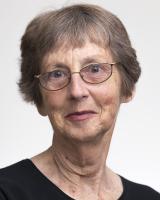 In the first two weeks of the campaign, members and friends of UU Santa Monica have contributed over $740 to the textbook fund for books for student inmates in the California Prison System. We’re nearly halfway to our initial goal of $1,500! The courses, which are offered by a community college, are free, but students must pay for textbooks, which many cannot afford. Letters from inmates who have received these funds affirm how important they are for their education and their future.
In the first two weeks of the campaign, members and friends of UU Santa Monica have contributed over $740 to the textbook fund for books for student inmates in the California Prison System. We’re nearly halfway to our initial goal of $1,500! The courses, which are offered by a community college, are free, but students must pay for textbooks, which many cannot afford. Letters from inmates who have received these funds affirm how important they are for their education and their future.
The campaign will continue over the next several weeks. Checks should be made out to “UUCCSM,” with “FIA — Textbook Fund” in the memo line. The checks will be deposited, and UU Santa Monica will send a check for the total to the community college foundation, which in turn distributes the fund in the form of scholarships, to be used for buying books needed for specific courses. Those wishing to donate may send checks directly to the church; checks and cash are also being collected at the FIA table in Forbes Hall after the Sunday services.
— Nora Hamilton
Rally August 9 to Demand Justice for Brandon Glenn
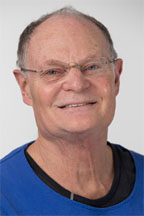 Brandon Glenn, an unarmed homeless Black man, was shot twice in the chest and killed by an LAPD officer (also Black) May 5 in front of a bar at 52 Windward Avenue, Venice. The shooting was recorded by a security video camera outside the bar. After reviewing the video, LAPD Chief Charlie Beck said, “Any time an unarmed person is shot by a Los Angeles police officer, it takes extraordinary circumstances to justify that. I have not seen those extraordinary circumstances.” (LA Times, May 6, 2015)
Brandon Glenn, an unarmed homeless Black man, was shot twice in the chest and killed by an LAPD officer (also Black) May 5 in front of a bar at 52 Windward Avenue, Venice. The shooting was recorded by a security video camera outside the bar. After reviewing the video, LAPD Chief Charlie Beck said, “Any time an unarmed person is shot by a Los Angeles police officer, it takes extraordinary circumstances to justify that. I have not seen those extraordinary circumstances.” (LA Times, May 6, 2015)
Angered by the killing, about 800 people attended a Town Hall meeting called by the LAPD in a Venice elementary school auditorium May 8, including several from UU Santa Monica. Following that meeting, there has been little activity or media attention to the killing. Members of our Peace & Social Justice Committee who attended the UUA General Assembly in late June were motivated to step up our actions against racism. We had an emergency meeting July 5, at which we decided we must do something in response to a killing by the police so close to home.
We decided to have a rally at the scene of the shooting, followed by a march to the LAPD Pacific Division. The rally was originally scheduled for August 2, but another organization that wants to participate had scheduled an out-of-town event that day, so we have moved it to August 9 at 1:30 p.m. That start time is so that congregants from First UU Church, whose Sunday service ends at 12 p.m., can join us. Our Faith in Action Commission, which is sponsoring the rally and march, is talking with other organizations about participating.
Meanwhile, a white homeless, mentally ill man, Jason Davis, was shot to death by an LAPD officer July 13 on the 600 block of Rose Avenue, Venice. Davis was said to have a knife, which from a bystander’s video appears to be a box cutter.
The rally will demand that these killings stop, that the police officers be indicted, and that the security video of the shooting of Brandon Glenn be released.
For more information, please contact me at fia@ uusm.org.
— Rick Rhoads
13th Month Pledge Drive Reduced our Deficit
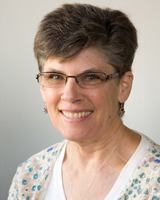 All members of the Board were present for this second meeting of the new church year held on July 14. We acknowledged that Nica Eaton-Guinn, our former intern, now summer minister, is beginning her last six weeks with us. Her last day will be August 23. We know we will miss her lovely presence among us.
All members of the Board were present for this second meeting of the new church year held on July 14. We acknowledged that Nica Eaton-Guinn, our former intern, now summer minister, is beginning her last six weeks with us. Her last day will be August 23. We know we will miss her lovely presence among us.
Sue Stoyanoff attended as a representative from the Committee on Ministry (COM), which plans to send one member to each upcoming Board meeting.
President Patricia Wright reminded us of our Board covenant and our commitment to respectful communication. We also agreed to begin slowly reviewing some of our policies to identify items that need to be brought up to date to reflect our current practice and to identify issues that are not currently addressed.
Following adoption of the Consent Agenda, Kim Miller, our treasurer, gave her report. She reviewed the end of fiscal year summary, which appears on page 5 of this issue. The total net income stands at a deficit of -$59,820. This money will be transferred into the operating budget from unrestricted reserves. Kim commended the Pledge Committee for conducting the 13th Month Pledge Drive. This has not been done in our church before, and it netted $8,200. Pledges constitute about 70% of our income. Total pledges collected for the fiscal year ending June 30 are $378,000, as compared to $410,000 budgeted. This total includes the 13th month contribution. Without the extra contribution, our fiscal year net income would approach the -$72,000 deficit predicted in the budget. Kim stressed that fundraising is of vital importance to our community and cannot be a task that is left to the Pledge Committee alone. Fundraising is a joint responsibility of everyone in the congregation and we must all work together to achieve a successful outcome.
The Board discussed ongoing plans for our daylong workshop on “Connecting our Community through Listening and Talking.” The workshop will be facilitated by Mary Mackenzie, MA, and the entire congregation is encouraged to attend. The workshop takes place on October 3. Watch for further publicity and opportunities to sign up.
The Board decided to plan regular meetings with the congregation, perhaps quarterly, to facilitate congregational communication with the Board. This was a suggestion that came out of the governance workshop led by UU Pacific Southwest District District Executive the Rev. Dr. Ken Brown on July 11.
The Board continued to plan for its annual retreat, to take place September 12. They also agreed to host the Second Sunday Supper on September 13.
The Board reviewed a summary of its progress so far on its consideration of governance change and its intention to appoint a Governance Task Force.
— Cynthia Cottam
New at 11: The Spirit Explorers!
 Starting on Sunday, September 27, look for brand new RE programming.
Starting on Sunday, September 27, look for brand new RE programming.
A shift in attendance patterns in the last four years has given us the opportunity to try something new at 11 a.m. Starting on September 27, at the 11 a.m. service only, RE at UU Santa Monica will offer a celebratory, multi-age program for children from Kindergarten through 8th grade called “The Spirit Explorers.”
Rather than grouping children by age, Spirit Explorers will offer different types of programming for all participants. Children will move from whole group activities to small group experiences. The program content will be drawn from our UU Seven Principles, the monthly Ministry themes, and the Six Sources of our Faith.
So what will this look like? Children will leave the service after the Time for All Ages as they normally do, and go to the Cottage. There will be a large group activity including welcoming and an introduction of the day’s program content through story, movement, or an exercise. After this, children will have a choice of two to three activities to further explore the day’s topic. One of these will always include movement and one will always involve a craft project. Examples of the some of the movement programming are yoga, dance, or active games. Finally, the class will end with the children coming back together as a group for a closing and then snack. Parent pick-up will still be at 12:15 p.m.
Children will have the freedom to choose in which of the available activities they want to participate on any given Sunday. Some children may always go for the movement. Some may always opt for the craft. Still others may want to mix it up. We are excited to offer this new program because it will allow children to engage with each other and with the weekly content in a setting that acknowledges our different ways of connecting with our community.
Please note: Nothing will change for Babies through Pre-Schoolers. As before, during the 11 a.m. service the nursery will be open for infants and toddlers from 10:45 to 12:15, and the pre-school classroom will be open for children ages 3 to 5 following the Time for All Ages until 12:15 p.m.
he 9 a.m. RE program will remain the same with age-specific programming through 12th grade.
Come try out the Spirit Explorers at 11:00! (And adult volunteers are always welcome, too.)
— Sabina Mayo-Smith
